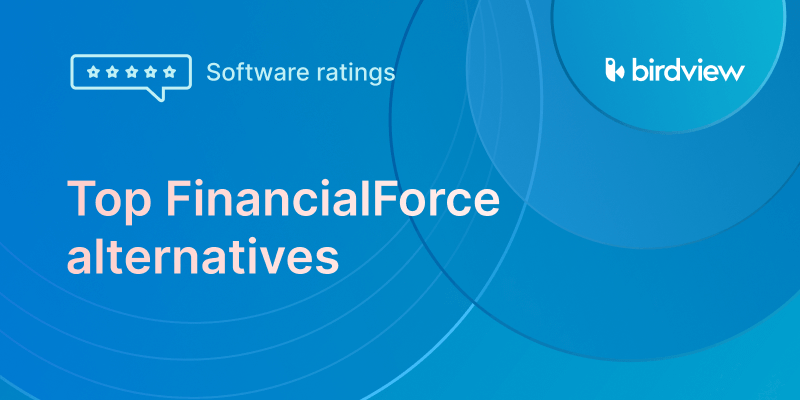Stepping into a leadership role in a professional services firm comes with excitement and challenges. You want to make a strong first impression, earn your team’s trust, and create a real impact–but where do you start? The first 90 days are crucial for setting the stage for long-term success. This guide breaks down how to create an effective 30-60-90 day plan specifically for professional services environments, with practical examples and actionable tips.
Here‘s a practical leadership 30-60-90 day plan for new managers to help you transition smoothly, gain quick wins, and align your team with strategic goals.
Build a strong foundation for your first 90 Days
Before you dive into creating your 30-60-90 day plan, it’s important to lay a strong foundation for your leadership. Focus on building trust, developing strong relationships, and understanding the environment in which you’ll be operating.
These simple steps will help you build trust, form strong relationships, and start your leadership journey.
Leadership begins with collaboration. To build a solid foundation for trust, it is important to actively engage with team members, customers, and stakeholders.
Key success tips for new managers
Align with company goals
Understand your organization‘s objectives and connect them to your team‘s work. Translate big-picture goals into clear, actionable tasks to show strategic focus.
Stay flexible
Challenges are inevitable. Stay adaptable, anticipate risks, adjust your plans when needed, and maintain calm leadership through changes.
Use available resources
Lean on mentors, experienced colleagues, and the right tools to strengthen your leadership approach and accelerate your learning curve.
Lead with empathy and authority
Balance being approachable with making firm decisions. Empathy builds trust; decisiveness earns respect.
Avoid common mistakes
Set achievable goals, nurture team collaboration, tailor your approach to the company culture, and track your progress to stay aligned and agile.
Why a 30-60-90 day plan matters
In professional services, leadership isn‘t just about managing people–it‘s about balancing client satisfaction, project delivery, financial targets, and team performance. A structured plan helps new managers:
- Set clear expectations for themselves and their teams
- Build credibility with leadership and clients
- Quickly understand operational workflows and culture
- Identify early wins that build confidence
A good 30-60-90 day plan acts as a roadmap to prioritize learning, relationship building, and delivering results.
What is a 30-60-90 day plan?
A 30-60-90 day plan is a structured framework that helps new managers or employees transition smoothly into a new role. It divides the first three months into three clear phases–each with specific goals focused on learning, building relationships, assessing challenges, and driving early results.
In the first 30 days, the focus is on understanding the organization, its people, and its processes. By 60 days, the priority shifts toward identifying opportunities for improvement, building trust, and aligning with broader business goals.
By 90 days, the goal is to start implementing changes, delivering measurable results, and demonstrating leadership impact.
In professional services, where client expectations, project deadlines, and financial performance are tightly linked, a 30-60-90 day plan helps new managers build credibility faster, avoid common early missteps, and set the foundation for long-term success.
Example of a 30-60-90 day plan template for new managers
A 30-60-90 day plan gives new managers a clear structure to navigate their first critical months. It breaks the transition into manageable phases–learning, assessing, and acting–allowing you to build trust, deliver early results, and set a strong foundation for long-term success.
First 30 days: learn, listen, and build relationships
The first month in your new role should focus on observation, learning, and building trust. Take the time to understand the business environment, your team, and key client priorities before initiating any changes.
Primary focus
-
Orientation, observation, and connection-building
🔹 Key actions
1. Meet with your team and stakeholders
Schedule 1:1 conversations with direct reports, peers, and senior leaders. Learn about their workflows, goals, challenges, and expectations. Start establishing trust through active listening.
2. Understand service delivery workflows
Shadow project teams to see how projects are managed and delivered. Review client contracts, active projects, and service-level agreements (SLAs) to grasp the firm’s commitments and standards.
3. Analyze key clients and projects
Identify the company‘s top clients and most critical ongoing projects. Note any risks, opportunities, or immediate client needs that require attention.
4. Review key performance metrics
Dive into operational data–such as utilization rates, profitability, and project timelines–to spot trends and areas for improvement.
(Explore more about KPIs for service firms).
5. Learn internal tools and systems
Get comfortable with PSA (Professional Services Automation) platforms, CRM tools, project tracking dashboards, and reporting systems that your team uses daily.
🛠 Tips for success
-
Ask thoughtful, open-ended questions without judgment.
-
Keep detailed notes and document key observations.
-
Focus on building trust through active listening and collaboration.
📈 Expected outcome
By the end of your first 30 days, you should have a clear understanding of:
-
Team dynamics and individual roles
-
Client relationships and project statuses
-
Operational strengths and improvement opportunities
Summarize your findings in a short internal report to align your next steps with organizational goals.
Days 31–60: assess, strategize, and deliver quick wins
After your first month of observation and learning, it‘s time to start making an impact. The goal over the next 30 days is to address immediate issues, implement small improvements, and begin aligning your team for long-term success.
Primary focus
-
Deepen your operational understanding
-
Solve urgent problems
-
Build early momentum
🔹 Key actions
1. Identify gaps and bottlenecks
Assess current workflows to spot inefficiencies in service delivery, communication, time tracking, and resource utilization. Focus on areas where small changes can deliver noticeable improvements.
2. Address urgent team and client needs
Intervene early if key projects or client accounts are at risk. Quick action here helps protect client relationships and boosts your team’s confidence.
3. Analyze team structure and resources
Review how the team is organized, individual skill sets, and resource allocation. Identify opportunities to optimize workloads and improve collaboration.
4. Review financial performance
Evaluate project margins, budgets, and billing models to understand how project delivery impacts profitability. Pay special attention to any early warning signs.
5. Improve communication and transparency
Establish a rhythm for clear, consistent updates to your team and stakeholders. Visibility builds trust and keeps everyone aligned.
Example:
If you notice inconsistent time tracking, propose a simple PSA system update that streamlines timesheet submissions, freeing up time for project delivery.
🛠 Tips for success
-
Balance quick wins with a strategic view–don‘t make changes just for the sake of speed.
-
Validate assumptions with data and team feedback.
-
Start introducing shared goals and setting expectations for the future.
📈 Expected outcome
By the end of your second month, you should have clear evidence of early wins:
-
Immediate operational improvements
-
Stronger team engagement and confidence
-
A documented summary of what‘s been improved and what challenges remain
Sharing these early successes with leadership and your team helps build momentum and sets the tone for deeper changes in the months ahead.
Days 61–90: take ownership and drive long-term impact
In your third month, the focus shifts from short-term improvements to setting a strong strategic direction. It‘s time to lead proactively, align your team for future success, and present a clear roadmap to leadership.
Primary focus
-
Implement improvements
-
Define long-term goals
-
Lead with vision and accountability
🔹 Key actions
1. Launch key initiatives
Start implementing larger process improvements, client engagement strategies, and team development plans based on the insights gathered during your first two months.
2. Set strategic goals
Work with your team to define clear, measurable objectives for the next 6–12 months. Focus on areas such as project delivery, client satisfaction, operational efficiency, and financial growth.
3. Present a 6-month roadmap
Share a strategic improvement plan with leadership, aligning your team’s goals with broader company priorities. Be open to feedback and adjust the plan as needed.
4. Deepen client relationships
Proactively strengthen client engagement. Look for upsell and cross-sell opportunities by positioning your team as a trusted partner rather than just a service provider.
5. Establish ongoing feedback loops
Create regular check-ins with your team and key clients to monitor progress, gather input, and stay agile in adjusting strategies as needed.
Example:
After identifying inconsistent onboarding experiences, introduce a standardized onboarding checklist through your PSA platform, significantly improving client ramp-up times and satisfaction.
🛠 Tips for success
-
Communicate wins clearly and frequently to leadership and your team.
-
Recognize and share credit with those who contribute to success.
-
Stay flexible–adjust plans as real-world results come in.
📈 Expected outcome
By the end of your first 90 days, you should have:
-
A well-defined strategic plan for the next 6–12 months
-
Clear KPIs and milestones to guide team growth
-
Stronger leadership credibility and team alignment
-
A foundation for ongoing client success and operational excellence
Final thoughts: setting yourself up for success
A strong 30-60-90 day plan helps new managers transition smoothly, build credibility, and start making a real impact. In professional services, where client success and operational efficiency go hand in hand, a thoughtful and structured approach sets the foundation for long-term results.
By focusing first on learning, then aligning your team, and finally taking strategic action, you lay the groundwork for a high-performing team, stronger client relationships, and lasting growth.
Your first 90 days don‘t have to feel overwhelming. With a clear focus on building trust, delivering early wins, and setting a long-term vision, you can drive meaningful change and set both yourself and your team up for lasting success.
What tools does a project manager use in a professional services firm?
Project managers in professional services firms rely on a range of tools to manage complexity, deliver on time, and maintain client satisfaction. Birdview PSA brings all these essentials into one platform.
With Birdview PSA, managers can plan projects, allocate resources, track time and expenses, and oversee budgets and profitability. They can also streamline client collaboration by sharing updates and documents through secure portals. Real-time dashboards provide visibility into project health, financials, and team utilization, while built-in risk tracking helps prevent issues before they escalate.
You may be interested in...
How PSA Differs from Project Management Software
What is Professional Services Automation (PSA) Software
Benefits of Professional Services Automation Software
Choosing the Best PSA Software for Professional Services
FAQ: what is a 30-60-90 day plan for professional services?
What is a 30-60-90 day plan in professional services?
It‘s a structured framework that helps new managers in professional services firms transition into their roles. The plan divides the first three months into phases focused on learning, assessing, and executing, ensuring a smooth integration into the organization and early impact.
Why is it important for professional services teams?
Professional services environments are fast-paced and client-driven. A 30-60-90 day plan helps new managers quickly align with business priorities, build trust with clients and teams, and deliver early wins without losing momentum.
What are the main focuses during each phase?
-
First 30 days: Learning the business, building relationships, understanding client and team needs.
-
Next 30 days: Identifying quick wins, improving processes, and addressing urgent issues.
-
Final 30 days: Implementing strategic initiatives, setting longer-term goals, and aligning the team for continued success.
How is it different from a regular onboarding plan?
While onboarding focuses on basic orientation and compliance, a 30-60-90 day plan emphasizes leadership, performance, and strategy from the start–critical in professional services firms where client outcomes are closely tied to operational efficiency.
Can the plan be customized?
Yes, it should be. A good 30-60-90 day plan is tailored to the firm’s structure, client base, service offerings, and immediate business goals.
Get Expert Guidance from Real Leaders
If you want more expert insights into Professional Service Leadership, download our free whitepaper, First 90 Days Blueprint for New Leaders in Professional Services. It‘s packed with real-world advice from experienced leaders who‘ve been in your shoes.



